Thanks for your support! If you make a purchase using our links in this article, we may make a commission. And, as an Amazon Associate, I earn from qualifying purchases. See the full disclosure here.
Towing a travel trailer can be tricky, and even dangerous if you don’t know how to stop travel trailer sway. If you’ve ever seen your trailer drifting side to side or felt the force of it pulling you all over the road, you’ve experienced sway.
Trailer sway, or fishtailing as it’s often called, can be a true white-knuckle experience. If you’re in love with your travel trailer, but not with the thought of towing it down the road, we’re here to help!
In this article, we will share with you a few simple things you can do to minimize travel trailer sway. We will also prepare you for how you can stay calm, and recover if fishtailing occurs.
We will cover everything you need to know to proceed with confidence and stay safe on your next travel trailer adventure!
6 Reasons Why Does a Trailer Sway?
If you want to stop travel trailer sway, you must first understand why sway occurs. There are six main causes of sway.
1. Wind

One of the most common causes of travel trailer sway is the wind. Travel trailers sway because they are top-heavy. Also, with their large, flat sidewalls, a small gust of wind can push them to one side or another.
2. Passing High Profile Vehicles

Any time your travel trailer passes by a large vehicle, such as a semi-truck, a vacuum is created between your RV and the semi-trailer. Once one of you passes the other, the low pressure is broken, pushing you away from each other. Being prepared for this attraction/detraction effect can minimize travel trailer sway.
3. Improper Distribution of Weight
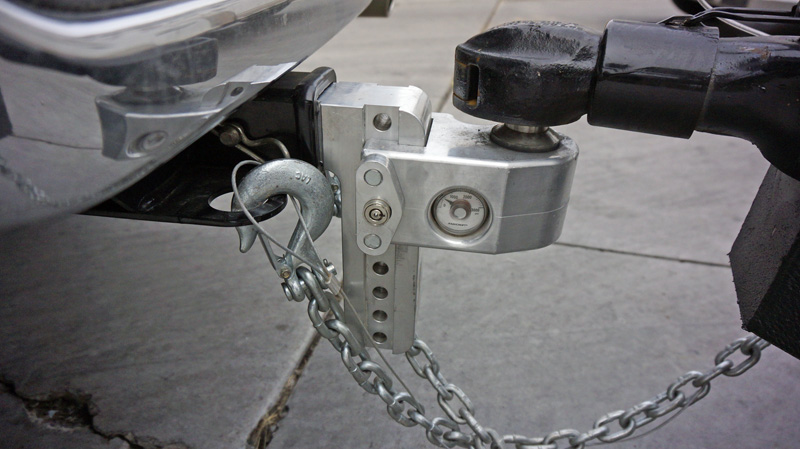
Improper weight distribution, particularly if there is not enough weight near the hitch, will cause increased sway. According to Purdue University, the optimal tongue weight of a travel trailer is 10-15% of the RV’s Gross Vehicle Weight (GVW). Fifth wheels should have a hitch weight of 20%.
4. Overloading Your Trailer or Your Tow Vehicle
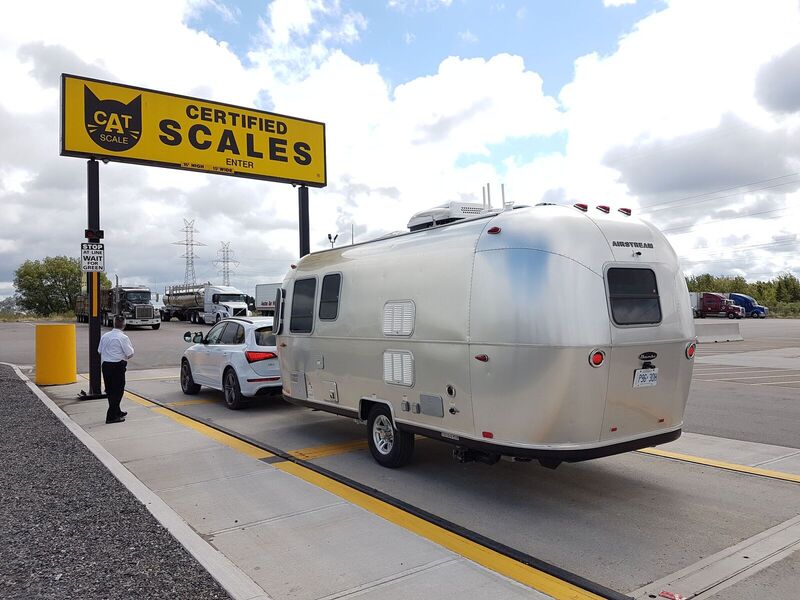
Every tow vehicle has a Gross Vehicle Weight Rating (GVWR). If your RV has a total weight over that manufacturer-approved amount, you risk fishtailing. It is important to consider the weight of all cargo, including passengers, in your calculations. If something unfortunate happens, insurance companies deny claims due to exceeding the GVWR.
5. Improper Tire Pressure
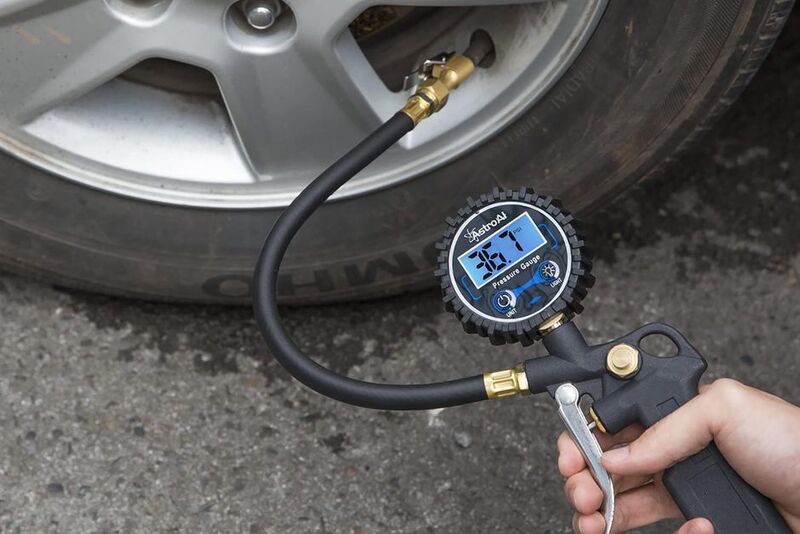
Underinflated tires can reduce the load capacity of your tow vehicle. Remember, overloaded vehicles are prone to sway.
6. Uneven Roads or Potholes

Uneven roads, potholes, dirt roads, and other road hazards can also cause sway. If there is no alternative, you should cross these sections of the road at a slower speed for better control.
The Right Towing Set Up to Minimize Travel Trailer Sway
Now that we have established what might cause an RV to fishtail, we can focus on building the right towing set up to minimize travel trailer sway.
1. A Vehicle With a Tow Package
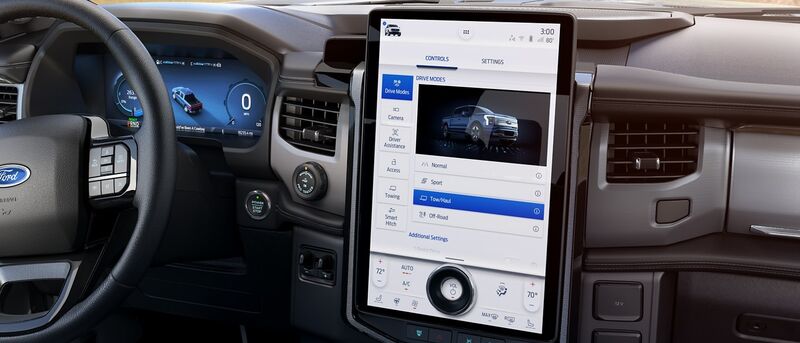
The vehicle that you use to tow your travel trailer can have a huge impact on how much sway you experience. A vehicle with a long wheelbase will be less susceptible to sway.
You should also choose a car, truck, or SUV equipped with a tow package. A tow package ensures your vehicle has all of the installed components needed to “grip it and rip it” down the road.
2. Weight-Distribution Hitch
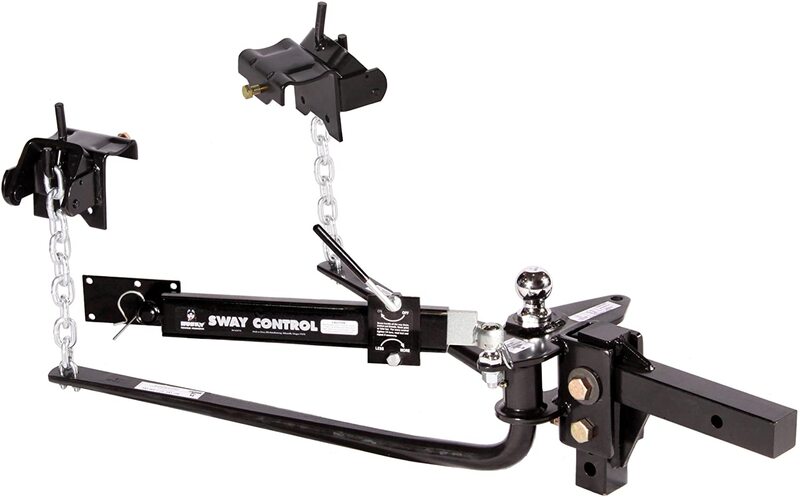
When you pair the best towing hitch with your properly equipped vehicle, you have the greatest chance of minimizing travel trailer sway. Weight-distribution hitches spread across all of the axles, so it’s not focused completely on the ball hitch.
Proper weight distribution will help prevent sway from starting. Weight distribution hitches also help prevent the back of the tow vehicle from dipping. This ensures the driver has more control to overcome sway should it occur. Additionally, weight distribution hitches with spring bars apply some side-to-side counterpressure that can help reduce sway.
3. Sway Control Device
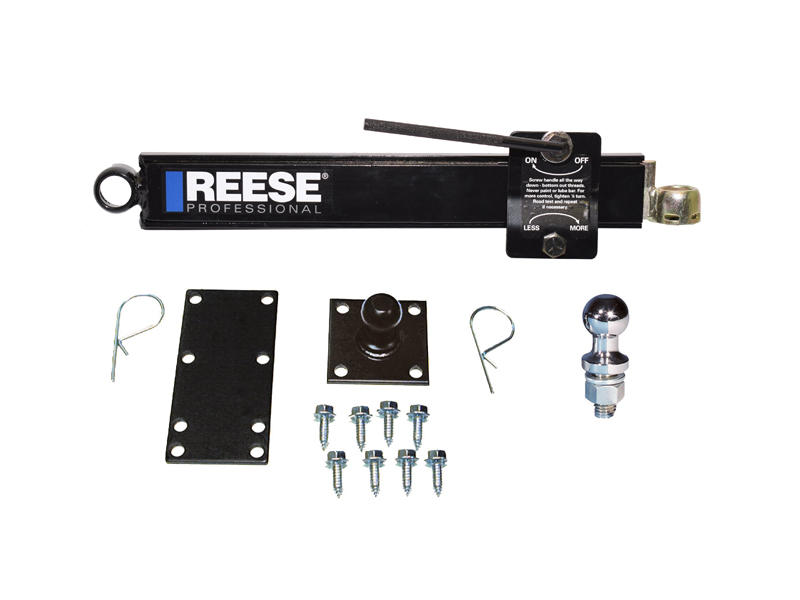
Even more important than a weight-distribution hitch is a sway control device. This crucial piece of equipment creates resistance against side-to-side movement. Its sole purpose is to reduce sway.
If you have a smaller trailer, a sway bar may be all you need to reduce travel trailer sway. But more commonly, you will want to use a sway control device in addition to a weight-distribution hitch. Many weight distribution hitches come equipped with sway control devices. Even if your weight distribution hitch doesn’t include a sway control device, it is usually very easy to add one.
What Causes Trailer Sway?
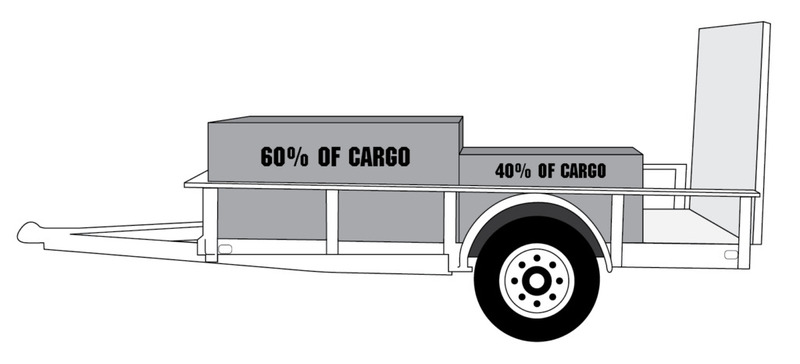
Travel trailer sway is sometimes unavoidable, but more often sway is caused by human error. Fortunately, there are many new habits you can employ that will help prevent sway.
It is very important not to overload your trailer or your tow vehicle. Always check the specifications of both your tow vehicle and RV (the Gross Combined Weight Rating or GCWR) and stay well within the guidelines. Keep the tires of your travel trailer and tow vehicle properly inflated to avoid accidentally reducing the load capacity.
U-Haul suggests loading 60% of your cargo in the front half of the trailer to avoid sway. The same can be applied to packing gear for a camping trip. Don’t forget to secure it so it doesn’t shift as you travel down the road.
If you properly pack your camper, you will reduce the likelihood that the backend of your camper will start to fishtail. Proper weight distribution also puts more weight near the tongue, thereby giving you better control of the RV.
A cardinal rule while towing a travel trailer is to avoid sudden movements whenever possible. Remember that every small movement of the steering wheel is amplified when towing a trailer.
You should familiarize yourself with your route before you travel. If you know what lane you need to be in well before an exit, you can avoid sudden lane changes.
It is also a best practice to anticipate travel conditions and plan accordingly. If possible, avoid traveling on exceptionally windy days. Finding alternative routes that go around construction zones can prevent many potential travel trailer sway battles.
Use RV-friendly trip planners like RV Life Trip Wizard that help you avoid construction zones and other roads that are not suited for your motorhome or travel trailer.
What Is Trailer Sway and Why Is It Dangerous?
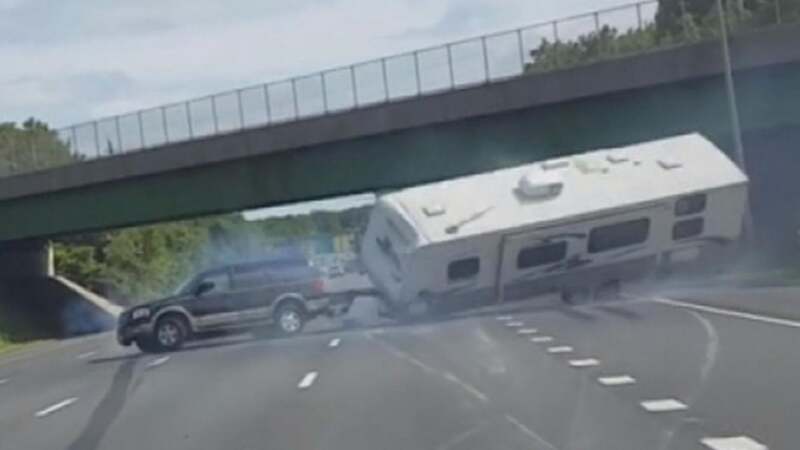
Trailer sways side-to-side, it can be dangerous to you and other vehicles on the road. If not properly corrected, the side-to-side movement of the travel trailer can build momentum. If not corrected, the tow vehicle’s tires can lose their grip on the road as the car, truck or SUV starts rocking.
This can cause the trailer to drift into neighboring lanes, jackknife into the tow vehicle, or even flip itself and the towing car. The bottom line is that travel trailer sway puts everyone on the road in great danger.
4 Steps To Recover From Trailer Sway
Even the most prepared drivers will not always be able to prevent sway, so you need to know how to recover from trailer sway.
If you grew up in the midwest as I did, you have likely heard the term “don’t veer for deer.” This popular euphemism warns against overcorrecting. We can apply this same warning to trailer towing. If you feel your trailer start to sway DO NOT react impulsively and steer the wheel rapidly in the opposite direction.
1. Keep the Wheel Straight

If you try to steer out of the sway, your sudden movement will only increase the problem. You will almost certainly cause your travel trailer to fishtail more. Instead, hold the steering wheel firmly and keep it straight.
2. Gentle Brakes
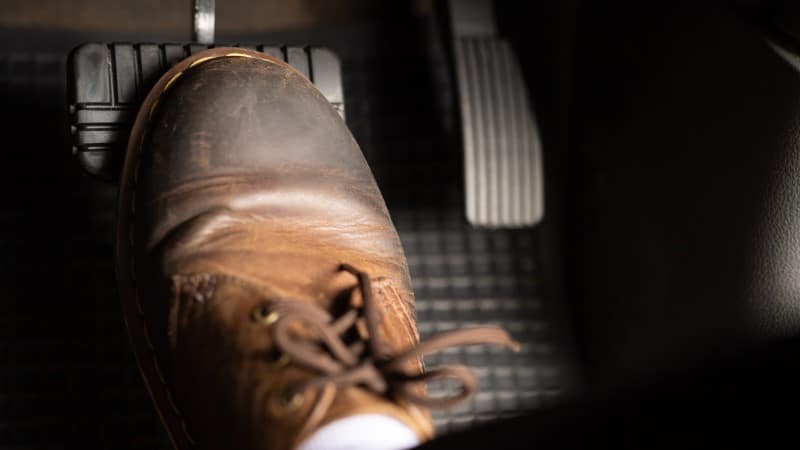
Your next priority should be to slow down. But do this carefully. Resist the urge to slam on the brakes since this will intensify the problem. Instead, you should let up on the gas pedal and allow your vehicle to slow on its own. Once you have started to slow, you can gently apply the trailer and tow vehicle brakes.
3. Pull Over and Inspect the Aftermath
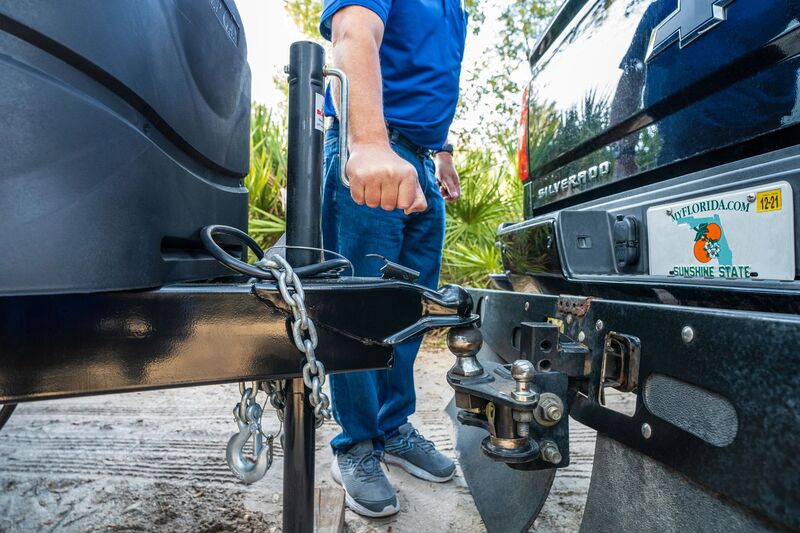
As soon as you regain control, pull off the road and evaluate your weight distribution. Make sure your cargo has not slid around. Also, make sure that your hitch and sway bar are both properly connected.
4. RVs Cruise, Racecars Race
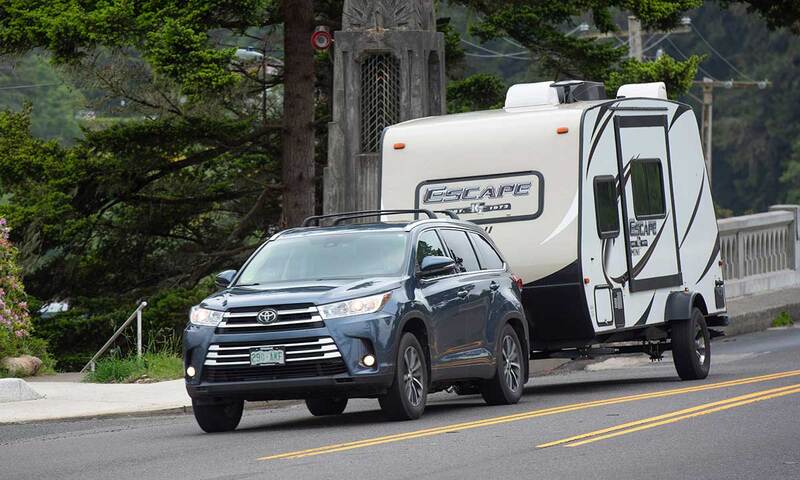
When you venture back onto the road after experiencing sway, you will probably be a little timid. That’s for good reason as sway can be both dangerous and scary. You will want to reduce your speed to avoid sway going forward.
RVers sometimes forget that the tow vehicles are made for torque, not speed. Cruise down the road at a manageable pace. A good rule of thumb is to continue at a speed 10 mph slower than the speed you were traveling when you first felt sway.
Controlling Sway on Your RV is Possible
You can control sway on your RV when you are aware of the many causes. Wind, high profile vehicles, improper weight distribution, overloading your trailer, improper tire pressure, poor road conditions, and human error can all contribute to travel trailer sway.
You can minimize the likelihood of sway by investing in and maintaining quality equipment, packing carefully, and pre-planning your route.
Even with the best equipment and preplanning, there will always be factors out of your control. The most experienced and aware drivers can be caught off guard. How you attempt to recover when your trailer begins to fishtail can make all the difference.
Do not slam on your vehicle brakes. Instead, allow the vehicle to slow on its own. While slowing, be sure to firmly grip the steering wheel keeping it straight. Once you begin to slow, gradually apply your trailer brake if you have one. Never try to steer out of the sway.
Keeping your composure, and reacting appropriately will ultimately help you recover from sway should it occur. Doing all of the above will build your confidence and keep you safe on the road.
Related Reading:
Most Common Travel Trailer Ball Hitch Size
Which RV is the Easiest to Drive?
35 Biggest RV Beginner Mistakes to Avoid!
20 Best Ways to Reduce RV Weight
When is it Too Windy to Drive an RV?
About the Author
Laura Tyrell – Author and Part Time RVer
Laura is a part-time RVer and a full-time mom of three. Long-time campers and RVers before children, Laura, and her husband have fallen even more in love with the RV lifestyle since becoming parents to a child with food allergies.
Having her own kitchen on wheels makes her RV trips amazing. Laura is passionate about finding ways to make traveling with young children fun, easy, and attainable.


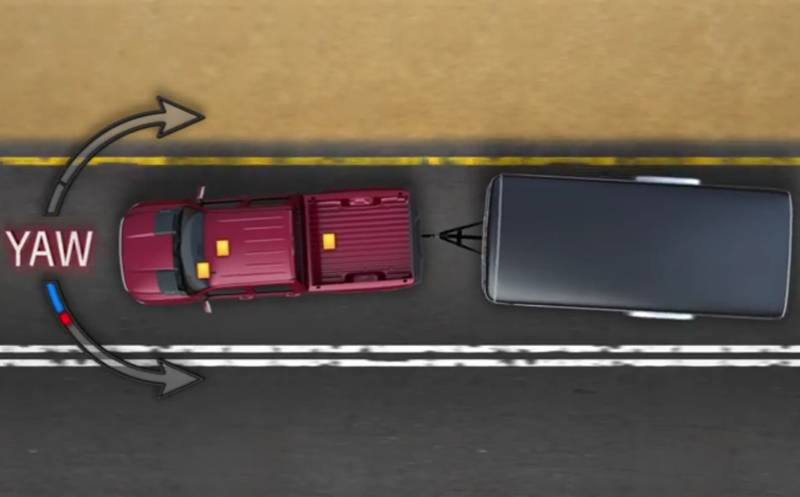
It makes sense that you should avoid overloading your trailer. I need to get a trailer that I can use to load some equipment. I’ll be sure to avoid loading too much.